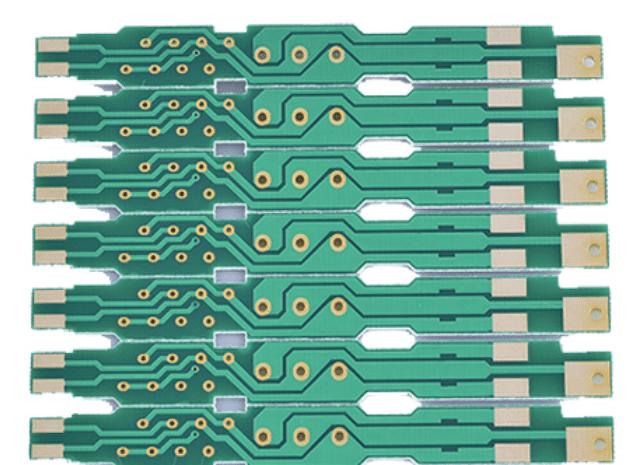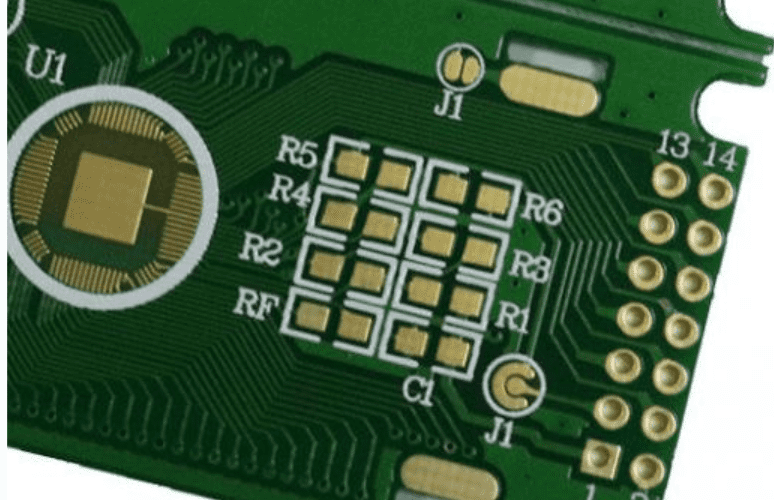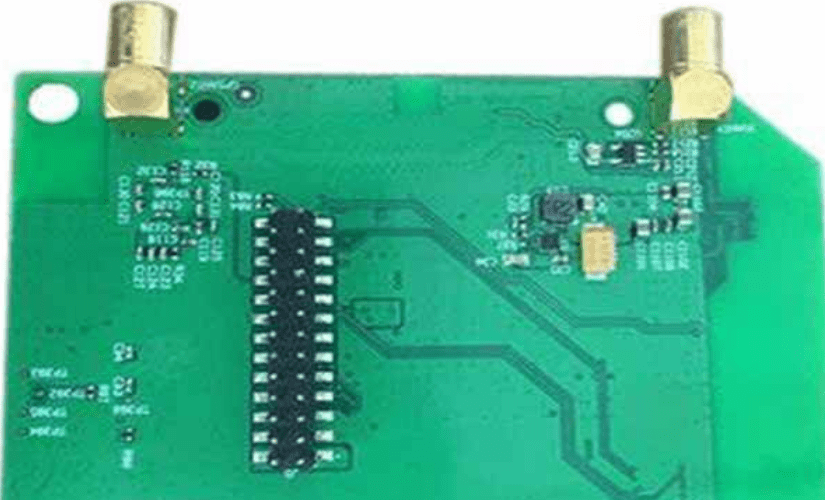When it comes to Printed Circuit Board (PCB0 design, the type of material used is very important to the circuit board design’s outcome. In terms of this, there is a debate on FR408HR vs FR408’s differences.
In this article, you will discover some of the differences between the two. But first, we will define each of them.
The Isola Perspective
Different PCB material manufacturers use different standards for the circuit board materials. However, there is one company that takes a different route. The name is Isola. It is a PCB material production company that specializes in manufacturing high-quality and reliable materials for use with circuit boards.
It is pertinent to point out that one of the company’s goals is to produce “high-performance laminate products that feature proprietary resin formulations that are engineered to meet your design specifications.” The manufacturer also expressed the commitment to “exceeding the customers’ expectations, through the delivery of quality configurable products.”

What is the FR408?
It is a high-performance FR-4 epoxy laminate and prepreg system designed for advanced circuitry applications.
Thus, you can be sure that it is one of the best materials from the FR-4 extension that can fit into the multi-tiered and advanced applications of circuit boards.
What is the FR408HR?
It is a different type of PCB material based on FR-4. In this case, it is a high-performance FR-4 resin system with a 230˚C (DMA) Tg for multilayer PCB applications. The FR408HR material is also used in designated PCB applications that require reliability and the maximum thermal performance possible.
The Differences between the FR408HR and the FR408
Here are some of the core differences that separate the FR408HR vs FR408. These differences range from the target applications, the attributes and the processing advantages.
1. Application Differences
The first difference exists between the FR408HR vs FR408 because of the target applications. While the FR408HR is ideal for use with the multilayer PCB applications, the FR408 is used with the advanced circuitry applications.
2. Overall Attributes
The attributes or properties of the FR408HR vs FR408 differentiate the two. On the one hand, we have the FR408 attribute based on the legacy of the material, while that of the FR408HR is based on the high-density interconnection, the high thermal reliability and the high-speed digitalization.
3. Design Considerations
How possible would it be to work with either the FR408HR vs FR408 without hassles? It all has to do with the specific design considerations.
As per the information from the manufacturer, the FR408HR vs FR408 differ by the following:
- FR-4 Compatibility: the FR408 material combines a low dissipation factor (Df) and a low dielectric constant (Dk). The two are responsible for boosting the material’s excellent configuration, without overly relying on some of the complex fabrication processes.
- Thermal and Electrical Operational Balance: the FR408HR material/system also offers a thermal and electrical operational balance. This is derived from the 25% increase in the electrical bandwidth, which results in lower loss, than other competitive circuit boards. It also offers this balance via the 30% improvement in the Z-axis expansion. Those are the major reasons why the FR408HR delivers an improved moisture resistance at reflow.
4. Target Market Differences
One other difference between FR408HR vs FR408 is the market or targeted applications they serve. While the FR408HR meets the demands of the aerospace, networking & communications, defense, medical, industrial & instrumentation, the FR408 serves the needs of the same.
However, the applications of the FR408 are based on the applications that deal mostly with improved signal integrity and broader broadband circuit design considerations.

Processing Advantages
This is another difference between the FR408HR vs FR408. The processing advantages have to do with the capabilities of both materials to fit into different applications.
On the one hand, we have the processing capabilities of the FR408 as UV blocking, compatibility with the FR-4 process and the AOI fluorescence.
On the other hand, we have the FR408HR’s processing capability as the:
- FR-4 process compatibility
- Multiple lamination cycles and;
- Via filling capability
Product Compliances
This has to do with the compliance or aligning of either the FR408HR vs FR408 to the specific industry standards.
The product compliances or standards of the two differ. The FR408HR’s product compliance or industry standard/recognition only includes the RoHS compliance. On the other hand, that of the FR408 encompasses RoHS compliance, UL Filing and the qualification to the UL’s MCIL Program.
Advantages of the FR408
If you are to compare the FR408HR vs FR408, one of the major distinguishing factors is the advantages or benefits of the PCB material. In the case of the FR408, a couple of factors separate it from the other – the FR408HR material.
These are some of the unique advantages of the FR408 material:
5. UV Blocking
The UV blocking has to do with the potentiality of attaining a high throughput and accuracy during the fabrication and assembly process of the Printed Circuit Board (PCB).
6. Excellent Processing
The processing capability of the FR408 material is also superior in the sense that it is the closest to all of the conventional FR-4 processing of all the high-speed materials.
7. Glass Fabric Undertone
The FR408 material is also made up of glass fabric, which includes square weave glass fabric and standard E-glass.
8. Versatility is the Key
In an industry where there are hundreds of consumer electronics, it makes sense that the PCB material is versatile.
The FR408 material meets that demand, as its versatility spreads across the different industries, such as aerospace, medical and defense.
It is also worthwhile to mention that the material is that the prepreg is readily available for use in some applications where only a few laminates work.
9. Reliability and Durability
The reliability and durability of a PCB laminate is an important point towards the performance. A laminate may be durable, but not reliable.
However, the FR408 laminate/material meets both demands, as it can thrive under different (adverse) weather conditions, as well as work well when exposed to excess temperature. It also derives the reliability and durability from the lead-free material that makes soldering easier.
10. The Mid-Loss Design
One of the huge benefits to working with the FR408 is that it is a mid-loss PCB material. By this, we mean that it doesn’t encounter multiple losses or come across certain restrictions that could potentially hamper the success of the immediate circuit board design.
It is therefore on that basis that we are pleased with the mid-loss approach that allows for the material’s use in the advanced circuitry applications.
Besides, the FR408 doubles as a prepreg and epoxy laminated PCB material, which offers a combination of high-performance and usage in the innovative and complex circuit boards.
11. Can the Signal be Trusted?
If there is one factor that makes a PCB material relevant, it is the reliability of the signal. In FR408’s case, it has both the improved signal integrity and the processing at faster speeds.
These two properties are derived from the low loss factor and the low dielectric constant.
12. Temperature’s Performance
The performance of the temperature and the associated reliability is derived from the elevated Tg (180˚C).
13. Co-Pressing Capabilities
One of the major attributes of modern circuit board materials is the capability to work with other boards. In the case of the FR408, it derives the co-pressing capability from the E-glass fabric, which has the same usage as the traditional DURAVER E-Cu quality 104 (FR-4).
It is therefore, on that basis, that the FR408 material enables the pressing and processing similar to the aforementioned. It is also on that basis that it gains the interoperable usage with the existing production systems without any additional expense.
14. Storage Capabilities
It is one thing for a circuit board material to be excellently produced and put to good use. It is another thing entirely for the material to be stored or kept in good shape until use.
For the FR408, it derives the storage capabilities from the production of the laminates in a standard sheet size measuring 1225 by 1070mm. On the other hand, the prepregs are readily available in the standard roll width estimated at 1255mm.

In terms of the storage, the pin-lam technology is used and from that, the required holes are punched into the prepreg panels.
It is from here that the material’s prepregs are stored up to three (3) months. To ensure an excellent storage and supply, the prepregs are to be stored under the following conditions:
- A 50% relative humidity and;
- Less than 20˚C.
However, important steps are to be taken when removing the “chilled product from storage.” It is also imperative to point out here that the prepregs can be stored for a longer timeframe. If that is to happen, they must be kept in a “refrigerated storeroom.”
Choosing the FR408HR: What You Need to Know
Certain factors must be considered if you are to choose the FR408HR material. Below are some of the things you need to know before choosing it:
15. Mechanical Strength
This has to do with the capability of the FR408HR to resist the tear and war associated with circuit board materials.
There are two categories to how the strength is tested.
16. Flexural Strength
This type of mechanical strength has to do with the material’s capability to thrive despite the mechanical stresses associated with using it in circuit board designs.
The rated flexural strength is 58.0 ksi in the cross direction and a 72.5 ksi in the length direction.
Generally, the flexural strength helps to evaluate the protection of the FR408HR material from breaking even after the stress is applied to the material’s edges.
17. Tensile Module Strength
This type of mechanical strength has to do with the determination of the material’s ratioed strain over the stress in any direction of the material.
The rating here is 3315 ksi for the cross direction and 3695 ksi for the length direction. This summation combines with the flexural strength to bolster the strength of the FR408HR material.
Design Considerations for the FR408HR Material
Take note that certain considerations must be in place before you get the most out of the FR408HR material. Below are some of the design considerations:
18. Warpage Prevention
Warpage could negatively impact the usage of the material and that is why it is pertinent to prevent it.
The prevention can be done via the regulation of the material to be cooled down to help prevent the chances of warpage.
19. Lamination Considerations
Before the material is to be laminated, its prepreg has to dried. Also, the inner layer must be maintained before it is laminated.
One other important consideration for the lamination is to ensure that the right temperature is used for the lamination.
20. Melting Consistency
Note also that the melting consistency of the material is in place. In this case, the rate of the heat must be regulated within the press for the lamination.
Which is Better: FR408HR vs FR408?

The choice of either the FR408 or the FR408HR circuit material depends on a variety of factors, such as the properties and the applications.
On the one hand, we have the core applications of the two targeted at the aerospace, computing, defense, medical, storage and industrial applications. The other applications include networking, peripherals, instrumentation and communication devices.
However, if you are to pick between FR408HR vs FR408, it has to be based on the electrical and thermal performances – of which the differences are only minimal. While the electrical performance of the FR408 material is Dk: 3.67 and Df: 0.0120; that of the FR408HR material is Dk: 3.68 and Df: 0.0092.
On the other hand, we have the thermal performance of the two as:
- FR408HR: Tg: 190˚C and Td: 360˚C
- FR408: Tg: 180˚C and Td: 360˚C
Final Words
Isola is the manufacturer of the FR408 and the FR408HR circuit board materials. The company thrives on the integration of relevant technologies into the products to help bolster the performance of the products.
The company also focuses on manufacturing products for the server systems, 5G communication markets, and data storage markets.
With the strict compliances to the international standards, such as those pertaining to the health and safety, quality, energy and environmental standards, you can be sure that the company makes sure that the electrical performances remain consistent across the different products and everyday devices we use.
Comments are closed